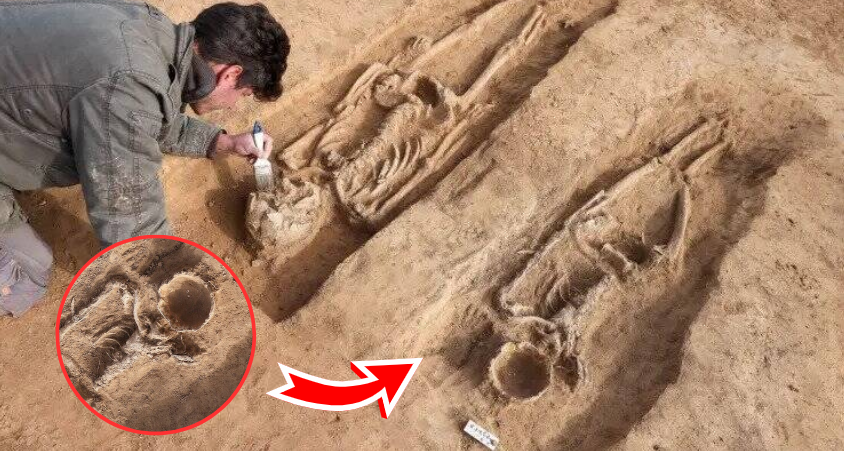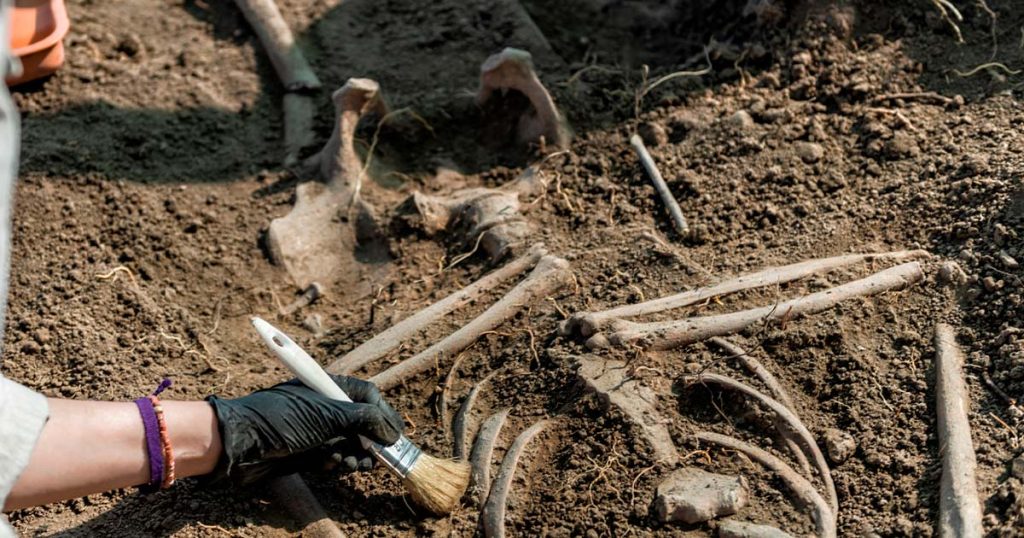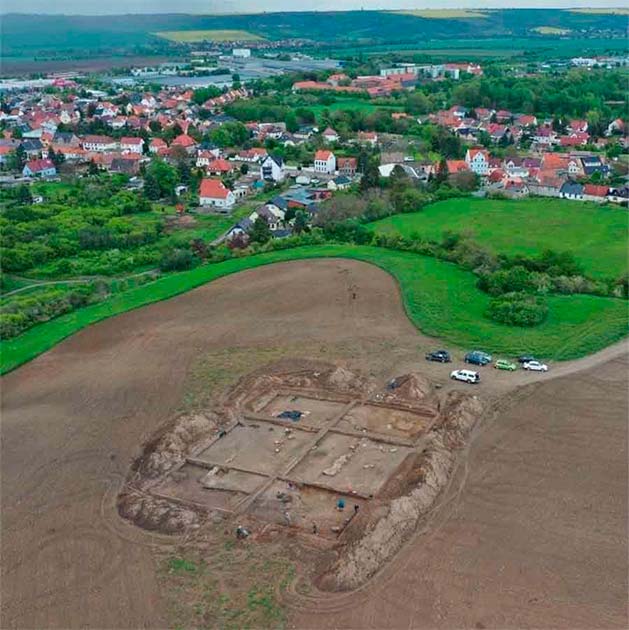
1,000-Year-Old Skeleton Couple Unearthed and the Woman is Missing Her Face!
While performing excavations at the site of an ancient imperial palace in the village of Eisleben in Germany, archaeologists unearthed the ruins of castle fortifications, as well as the 1,000-year-old remains of an elite couple. Archaeologists were stunned to discover that the woman was missing all her facial bones.
Elite Graves Highlight Aristocratic Power Structure in Ancient Helfta
Archaeologists uncovered two graves in the newly discovered cemetery dated to the Carolingian period. Inside the graves were “the buried bodies of a man and a woman, presumably a married couple, [who] lived in the 9th Century,” project leader Felix Biermann from the Saxony-Anhalt State Office for the Preservation of Monuments and Archaeology told the German press agency DPA.

There was one very notable and curious aspect of the burial. The female skeleton’s facial bones were missing, and since the grave had never been disturbed it must have been buried in that condition. It’s possible that the missing bones were damaged as a result of a fatal accident, although that is just speculation at this point.
The man was buried with an impressive collection of iron grave goods, including a knife, a belt set and part of what is known as a staff of office, a symbol of status that was carried by military leaders in ancient times.
“So the man might have been a socially higher-ranking person,” Biermann theorized.
Given the proximity of their graves to the medieval castle, and the assortment of burial goods entombed with the man, the archaeologists believe the two people were wealthy and enjoyed high status. These graves were unearthed in a location not far from another elite medieval cemetery, which was discovered in 2021 and was found to contain approximately 70 elaborate burials.
Fortified Imperial Palace
MSN reported that archaeologists unearthed the ruins of the royal castle, which was used as a defensive fortification, a collection of pit houses and a separate royal structure that was built over the original palace in the 12th century.
“In the two outer castles of the fortified imperial palace, there was evidence of dense settlement with numerous pit houses,” Biermann stated.
This is one of the most extensive set of ruins unearthed at this ancient site, which is located in a neighborhood known as Helfta in the German state of Saxony-Anhalt. The presence of these structures suggests a relatively large population lived in the vicinity of the royal palace more than 1,000 years ago.
“This is an important insight into the infrastructure of the imperial palace and the areas where ordinary people lived, worked aand created the economic foundations for the Carolingian-Ottonian center of power,” Biermann said, referring in the latter part of his statement to the Carolingian and Ottonian dynasties that supplied Germany and greater western Europe with kings and emperors between approximately 750 and 1024 AD.

Remains from the Imperial Palace of Helfta at Eisleben, Germany. Source: Landesamt für Denkmalpflege und Archäologie Sachsen-Anhalt
Otto the Great as King, Emperor, and Monumental Builder
The most famous king from the time period when the medieval palace and surrounding settlement were built was Otto I, better known as Otto the Great and as the founder of the Ottonian dynasty. He served as Holy Roman Emperor from 962 to 973, and it is known that he lived in the Helfta palace at least part of the time.
Archaeologists digging at this site in 2021 uncovered the long-buried foundation walls of an ancient Catholic church, and it was subsequently discovered that this grand religious structure had been built at the behest of Otto I. Based on the nature of the ruins this would have been a huge and impressive cathedral, constructed by Otto as a testament to his dedication to the Catholic faith. It is ironic that he should have ordered this church to be built in Eisleben, since this very same town was the birthplace of the famed 16th century Protestant reformer Martin Luther.

Excavations at the site have turned up other interesting structures and ruins over the years. These include various residential and commercial buildings, large and fancy homes built for the wealthy, and an auditorium where meetings or public entertainment events would have been held. Many of these structures date to the time of Otto the Great’s kingship, which continued the tradition of consolidated rule of western Europe under German control that started during the reign of the Frankish Carolingian dynasty in the ninth century.
Unearthing a Mysterious Past at Helfta
Excavations at the Helfta royal palace will continue in the upcoming months and years, as archaeologists search for artifacts that will help them learn more about the legendary culture that occupied this part of eastern Germany in the Early Middle Ages, and in the centuries beyond. They will also be further exploring the newly discovered castle that was constructed in more recent times, which was essentially built on top of the old medieval royal palace and was used from the 12th through the 15th centuries by the ruling nobility.
As for the newly discovered skeletons, the archaeologists will be examining these remains much more closely in a laboratory setting, to see if they can determine a cause of death and the woman’s face was missing




